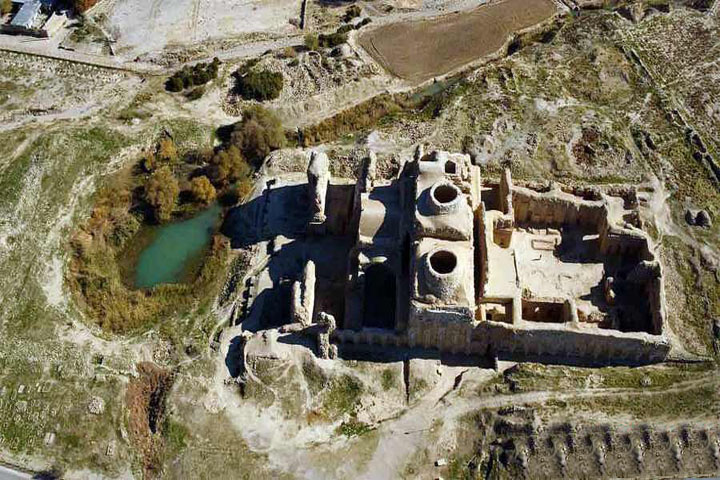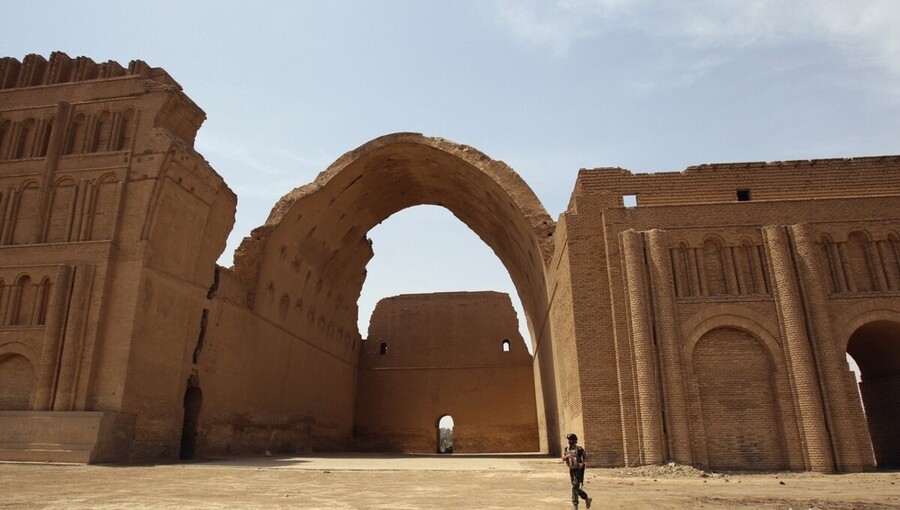One of the questions in the field of Kurdish and Kurdistan history is the relationship between the Kurds and the Sassanids. The beginning of this question goes back to the letter of Ardavan, the last Ashkani king, to Ardeshir, the founder of the Sassanid state, who called him "The great Kurd in Kurdish homes". Some researchers, based on this and other translations, consider the Sassanids to be Kurds, while others have interpreted the word Kurd as a shepherd and out of the identity aspect.
The author does not seek to prove or test either of these two views, but rather to encourage researchers to focus on this relationship by emphasizing several questions. These questions have occupied the author's mind and he hopes to find an appropriate answer by bringing them to the forum of conscious Kurdish readers.

The historic city of Tisfon - the capital of the Sassanid Empire
1. The Sassanids ruled from 224 to 651 AD for 427 years. According to their geographical location, none of the nations had the borders of their rule as close as the Kurds to the east of Dijla. According to the sources of the time, the Kurds were their neighbors before the establishment of the Sassanid Empire and Ardeshir fought against them from the beginning. We also know that the name Kurd was widely used after the fall of the Sassanids and its language, culture, and traditions were mentioned. How can you be in power among a people for nearly five hundred years without making the slightest change to their language and culture or not being controlled? Linguists can answer this question in terms of the relationship between power identity and language.

Taq Kisra - the center of governance of the Sassanid Empire
2. The Sassanid capital was in Madain, near present-day Baghdad, but the Sassanid kings migrated most of the summer to Kermashan or Shiz (Tekab) in Azerbaijan, which was a great religious center. These kings passed through the cities and villages of Kurdistan to reach these two regions and mixed were close to their people. Also, most of their palaces, buildings, and resorts were located on the road from Khanaqin to Asadawa, where the majority of the population was Kurdish. If the Sassanid kings had considered the Kurds as foreigners, would they have been able to continue their rule for nearly five hundred years?
3. A preliminary analysis of the statistics shows that most of the cities, bridges, roads, and monuments of Sassanid life and civilization are located in Kurdistan and the present language, along the Zagros Mountains, ie in Kermashan, Kurdistan, Ilam, Lorestan, Sulaimani, and parts of Diyala. What did the Sassanids mean by this?

Rostam Pattern - The Scene of Ardeshir I - The Founder of the Sassanid Empire
4. During the 427 years of Sassanid rule, any widespread regional uprisings against the Sassanids have not been mentioned in the sources of that period. Is it for nothing that we have not found or seen any evidence of the Kurdish uprising against the Sassanids at that time? While Kurds were located on the border of the Sassanid state and the Roman Empire, it was normal that the wars between these two states caused the most damage. According to the documents, the Kurds formed the main part of the Sassanid army in the wars against the Romans and the Arabs of the border areas.
5. During the fall of the Sassanid Empire, where was the greatest resistance against the Arabs? I ask this question only from a historical point of view and has nothing to do with religion. The answer is that Arab Muslims easily escaped through Iraq and reached Halwan (Arabicized as Alwand, in the present Zahaw plain) a year later in 15 AH. Then the Muslim Arabs remained in the mountains for six years (The Battle of Nahawand or Fath al-Futuh took place in 21 AH) and did not enter the main borders of Sassanid rule in Kermashan, Ilam, Lorestan, Kurdistan, and Azerbaijan. However, after escaping from this region, many easily reached Khorasan within a year. Our question is whether this resistance in this region was only due to geographical location or other factors that played a role in it.

Palace of Ardeshir Babakan - a monument of the Sassanid Empire
6. Why have the Kurds been attacked and insulted in Arabic sources and translations more than other people within the Sassanid rule? Why have the Arab sources expressed such hatred against the Kurds and insulted their roots? I have been wondering for a long time how to interpret all this hatred towards the Kurds, but I have not yet found an appropriate answer. Do you think this issue has anything to do with the relationship between the Kurds and the Sassanids? I hope researchers will raise more of these questions.








